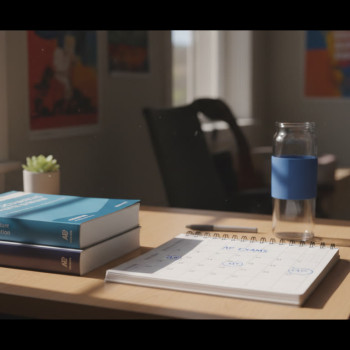Why this matters: The quiet cost of choosing the wrong Calc
Every spring and fall, high school schedules fill up with choices that feel like small boxes to check: electives, labs, sports. Then there’s calculus. It sits at the intersection of curiosity and consequence. Choose the right calculus course — AP Calculus AB or AP Calculus BC — and you gain confidence, college credit potential, and a smoother transition into STEM majors. Choose the wrong one, and you may face overwhelmed semesters, lower grades, or missed mastery of fundamental ideas that future courses assume you’ve already internalized.

What “misplacement” actually looks like
When I say misplacement, I’m not talking about a student who simply prefers a different flavor of math. Misplacement shows up in a few recurring ways:
- Students leap into Calculus BC because it “looks better” on an application — then struggle with gaps in prerequisite algebra and trigonometry.
- Students take Calculus AB but later find their campus credit policies favor BC for sophomore standing, leaving them needing a separate course in college.
- Schools offer accelerated tracks or let students “test out” early without a full readiness evaluation, and the student crumbles under the pace.
Each of those scenarios is fixable, but only if students and parents can spot the difference between ambition and readiness.
AP Calculus AB vs BC: the quick, practical differences
Think of AB as the thorough introduction and BC as the introduction plus an advanced second-semester portion. AB corresponds roughly to a first-semester college calculus course focused on differential and integral calculus. BC covers AB content and continues with sequences, series (including Taylor and Maclaurin series), and additional techniques and applications.
At-a-glance table
| Feature | AP Calculus AB | AP Calculus BC |
|---|---|---|
| College equivalency | First-semester college calculus | First- and second-semester college calculus |
| Typical content emphasis | Differential and integral calculus; area, accumulation, basic applications | All AB content + parametrics, polar, vectors, series, advanced integration |
| Exam shape | Multiple-choice + free response; calculator required for some parts | Similar structure; sometimes more emphasis on series and multi-step procedures |
| When to choose it | If you’ve solid algebra/trig foundations and want depth without extreme pace | If you’ve mastered pre-calculus, are comfortable with fast pacing, and want fuller college credit |
Symptoms of a poor placement decision (what to watch for early)
You don’t need to wait until report cards arrive. There are early, visible signs that a student may be in the wrong course:
- Persistent confusion about basic function behavior (domain, asymptotes, end behavior).
- Frequent errors on algebraic manipulations during timed work.
- Homework takes exponentially longer than peers to complete.
- Stress around tests that is more about not knowing foundational steps than forgetting formulas.
These signs are not character flaws. They’re diagnostic signals telling you where support or a course change might help. An early check-in with a teacher, counselor, or qualified tutor can often prevent the semester-long spiral.
Real-world example
Consider two students: Maya and Aaron. Maya skipped a summer pre-calc review and enrolled in BC because her older sibling had sailed through it. By October she was spending three hours nightly on homework, still missing core algebraic simplifications, and she began to dread class. Aaron, meanwhile, took AB, used that extra breathing room to solidify foundations, scored well on the AP, and entered college with confidence. Both were ambitious. The difference was readiness and the learning plan.
How colleges view AB vs BC — and why that matters
Colleges vary in how they award credit and placement for AB and BC scores. Some grant full year credit for a high BC score; others give credit only for the equivalent semester and require placement exams. That variability is why the decision to take AB or BC shouldn’t be made purely for admissions optics.
If your student’s goal is admission to a top college, show mastery. A strong score in AB is better than a poor score in BC. Admissions officers look for demonstrated ability and upward trajectories; they also value authenticity and sound academic judgment. In other words: picking a tougher course for the label without the preparation can backfire.
Practical advice: How to align course choice with college goals
- Ask colleges you’re targeting for their AP credit policy early. If they accept BC for two semesters’ credit, BC can save time — but only if you’re prepared.
- Remember: one high AP score speaks louder than a transcript full of barely-passing advanced classes.
- If your school lets you take both AB and BC in the same year, be cautious: you can’t take both AP exams in a single year, so think about which exam maps to your goals.
Diagnosing readiness: a simple three-step checklist
Before committing to BC, run this quick readiness check. If you answer “yes” to most items, BC could be a fit. If not, AB or a preparatory pathway will likely serve you better.
- Do you consistently solve algebra and trigonometry problems under time pressure with fewer than 3–4 errors per set?
- Have you worked with limits, derivatives, and definite integrals in a conceptual way (not just memorized steps)?
- Can you comfortably manipulate series and sequences concepts, or are they mostly unfamiliar?
If you answered “no” to any of those, treat the result as an opportunity: targeted review, a bridge course, or personalized tutoring can create the pathway to success.
Where targeted support helps most
The most efficient gains come from focused interventions:
- Algebraic fluency drills (polynomial division, trigonometric identities, transformations).
- Concept-driven problem sets that force translation between graphical, symbolic, and verbal representations.
- Timed practice under exam-like conditions to build procedural speed without sacrificing understanding.
Personalized tutoring — for example, 1-on-1 guidance that creates a tailored study plan and uses data to identify weak nodes — accelerates progress. Programs that mix expert tutors with AI-driven insights can provide both human intuition and efficient diagnostics.
Designing a smarter semester: pacing, practice, and planning
Whether your student is in AB and wants to take BC later, or is heading into BC now, the secret sauce is pacing plus deliberate practice. Here’s a flexible semester plan you can adapt.
8–12 week focus blocks (example)
- Weeks 1–4: Foundation consolidation — algebraic manipulation, trig review, function behavior.
- Weeks 5–8: Core calculus mechanics — limits, derivative rules, basic integrals.
- Weeks 9–12: Higher-level application and exam strategies — series, polar/parametric review, timed free-response practice.
During each block, rotate between skill-building (30–40% of time), mixed problem sets (40–50%), and low-stakes timed practice (10–20%). This balance builds depth and the resilience to solve unfamiliar problems on exam day.
Weekly micro-routine for busy students
- Three focused practice sessions (45–60 minutes): concept review, then 20–30 minutes of targeted problems.
- One timed section or full-length practice every two weeks, increasing frequency as the exam approaches.
- One tutor or teacher check-in every 1–2 weeks for feedback and to correct misconceptions early.
Study strategies that actually stick
We all love clever tricks, but the best strategies are simple and repeatable:
- Explain solutions out loud — to a peer, parent, or tutor. Verbalizing reveals shaky logical steps.
- Mix problem types. Don’t practice integrals for a week straight; interleave derivatives, integrals, and application problems to force context switching.
- Reflect on errors. Keep a ‘mistake log’ with the underlying reason (algebra error, misread question, concept gap) and one corrective action.
Students who apply these habits consistently see faster improvements than those who passively rework solved problems.
How to use practice tests wisely
Practice tests are diagnostic, not punishment. When a practice test reveals weaknesses, treat it like a map. Instead of redoing the whole test, extract the types of problems missed, trace the root cause, and schedule targeted sessions to repair those nodes.
When to consider switching courses mid-year
Switching from BC to AB or pausing to take AB first is not failure — it’s strategic realism. Consider a change when:
- Grades have dropped significantly despite increased effort and targeted help.
- Stress and time-on-task are negatively affecting other core classes.
- A counselor or teacher recommends a course change after observing persistent conceptual gaps.
Make the decision quickly so the student can adapt to the new pacing. A mid-year switch gives time to rebuild confidence before AP testing season.
Parents’ role: supportive, not directive
Parents are the anchor in this process. But the most effective support is action-oriented: ask open questions, offer structured help, and advocate for resources rather than imposing decisions. Useful questions include:
- What parts of your homework feel like work you understand versus work that feels like guesswork?
- When you get a problem wrong, what usually happened — a small step or a big conceptual gap?
- Would a structured tutoring plan or a short preparatory course feel helpful right now?
Celebrate small milestones: a timed section under target time, a solved tough problem, or a test score that shows steady growth. Those wins build momentum.
The role of tutoring and personalized plans
Quality tutoring is more than answering homework questions. It’s diagnosis, individualized pacing, and practice structure. For many students, a short series of 1-on-1 sessions focused on weak nodes yields bigger gains than monthly classroom review. When tutoring is combined with adaptive tools that track progress, it becomes surgical: you treat exactly what’s broken rather than using broad strokes.
Sparkl’s personalized tutoring model — with expert tutors, tailored study plans, and AI-driven insights — can fit naturally into this approach by quickly identifying misconceptions, sequencing skills for mastery, and providing consistent feedback that keeps students on track. When used judiciously, such support preserves motivation and builds the deep fluency colleges respect.
Choosing the right tutor
- Look for a tutor with AP Calculus experience and a record of diagnosing conceptual gaps.
- Prefer tutors who teach problem-solving frameworks rather than just “how to get the answer.”
- Short term, measurable goals (e.g., a 6-week plan to master improper integrals) help both student and tutor measure success.
Recovery plan: if you already started BC and it’s not working
First, take a breath. This is fixable. A recovery plan might look like:
- Week 1–2: Rapid diagnostic to identify the top 3 problem areas (algebra fluency, trig identities, series basics).
- Week 3–6: Targeted remediation with daily short practice and weekly tutor check-ins.
- Week 7–12: Reintroduce BC topics with scaffolding, alternating review and new problems.
If after remediation the student still struggles, consider switching to AB to rebuild confidence and secure a strong AP score. The long view matters more than short-term prestige: a solid AB score and deep understanding will open doors.
Planning for next-level math in college
Students who complete AB or BC with strong mastery are positioned differently in college math sequences. A high BC score can place students into multivariable calculus or linear algebra sooner; a strong AB score typically grants placement into second-semester calculus equivalents at many institutions. Regardless of which route you take, prioritize conceptual understanding — universities teach advanced techniques on that solid foundation.
Final checklist before you register
- Have you completed a honest readiness checklist (skills + time availability)?
- Did you consult your school’s AP teacher or counselor about pace and support options?
- Is there a short-term plan (4–8 weeks) to shore up any weak areas before class starts?
- Have you considered a tutoring pilot — 3–6 sessions — to evaluate fit and impact?
Closing thoughts: ambition guided by strategy
Choosing between AP Calculus AB and BC isn’t a binary judgment on talent. It’s about timing, preparation, and strategy. Students who pair ambition with honest self-assessment and smart supports — well-paced practice, feedback loops, and when appropriate, personalized tutoring — consistently do better. The “right” calculus is the one that helps you learn deeply, confidently, and in a way that aligns with both your college goals and your well-being.
If you’re unsure where to start: schedule a focused diagnostic, set a short remediation plan if needed, and consider trial tutoring to test whether structured, 1-on-1 help fits your learning style. With the right plan, students routinely move from overwhelmed to empowered — and from misplaced to masterful.

Ready to make a confident choice? Take the small steps now — honest assessment, targeted practice, and timely support — and your student will thank you later. Calculus is a language for change. Learn it well, and you’ll be the one shaping it.



















No Comments
Leave a comment Cancel